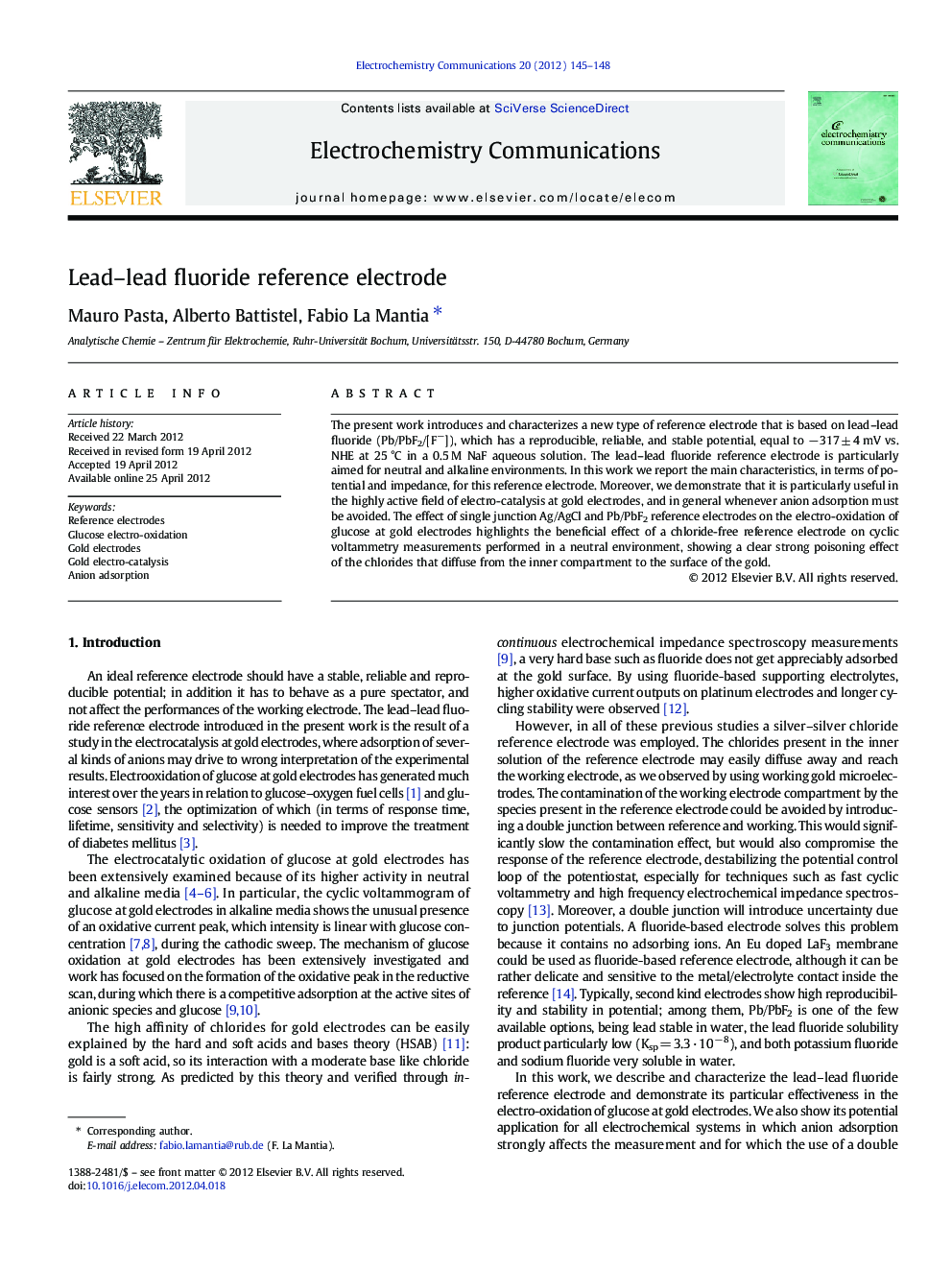| Article ID | Journal | Published Year | Pages | File Type |
|---|---|---|---|---|
| 179733 | Electrochemistry Communications | 2012 | 4 Pages |
The present work introduces and characterizes a new type of reference electrode that is based on lead–lead fluoride (Pb/PbF2/[F−]), which has a reproducible, reliable, and stable potential, equal to − 317 ± 4 mV vs. NHE at 25 °C in a 0.5 M NaF aqueous solution. The lead–lead fluoride reference electrode is particularly aimed for neutral and alkaline environments. In this work we report the main characteristics, in terms of potential and impedance, for this reference electrode. Moreover, we demonstrate that it is particularly useful in the highly active field of electro-catalysis at gold electrodes, and in general whenever anion adsorption must be avoided. The effect of single junction Ag/AgCl and Pb/PbF2 reference electrodes on the electro-oxidation of glucose at gold electrodes highlights the beneficial effect of a chloride-free reference electrode on cyclic voltammetry measurements performed in a neutral environment, showing a clear strong poisoning effect of the chlorides that diffuse from the inner compartment to the surface of the gold.
► Lead–lead fluoride is based on weakly adsorbing ions. ► Electrode potential of − 317 mV vs. NHE at 25 °C in a 0.5 M NaF solution. ► The presence of the Pb/PbF2 reference electrode does not poison the gold electrocatalyst during glucose oxidation. ► The presence of the Ag/AgCl reference electrode poisons the gold electrocatalyst in less than 1 h.
